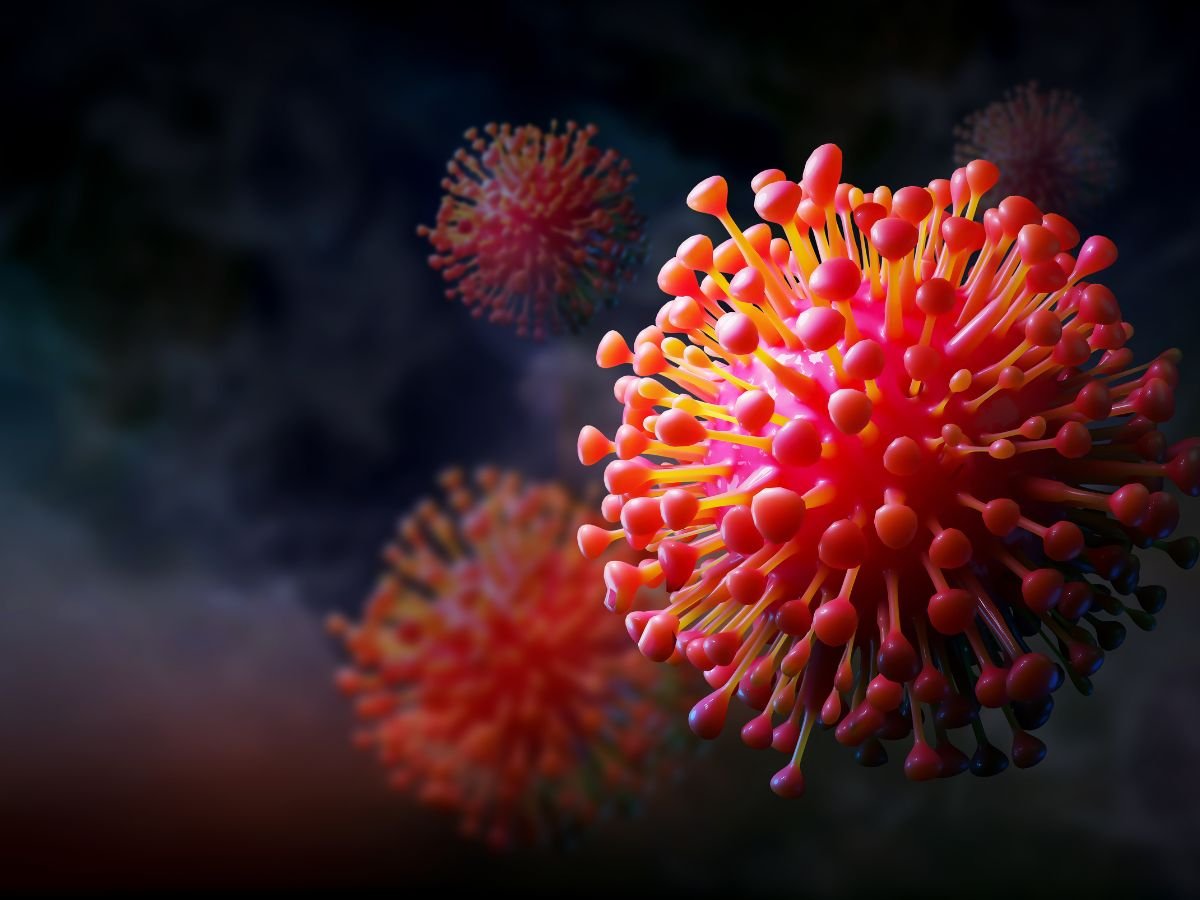New Delhi, 13 June 2025: A new COVID-19 subvariant known as NB.1.8.1, nicknamed ‘Nimbus’, is drawing global attention for causing an extremely painful symptom described by patients as a “razor blade throat.” Emerging in multiple countries including the UK, US, and parts of Asia, this variant is a descendant of the JN.1 lineage and has started to trend due to its unusual and intense upper respiratory symptoms. Though hospitalisations remain relatively low so far, doctors and virologists warning that the pain associated with the sore throat caused by NB.1.8.1 is much more severe than what experienced during earlier COVID waves.
What is NB.1.8.1 or ‘Nimbus’ and Where Did It Come From?
NB.1.8.1 is a subvariant of the JN.1 strain, which itself was a descendant of the Omicron family. Like its predecessors, NB.1.8.1 has evolved several spike protein mutations that help it evade immunity and spread faster. According to data from viral genomic sequencing, this subvariant has rapidly increasing in prevalence in recent weeks, although official case numbers may underreported due to decreased testing in many countries. Experts suggest that the ‘Nimbus’ nickname came from the way patients describe a “cloud of pain” in their throat, similar to being cut by glass or razors when swallowing, coughing, or even speaking.
Most Distinctive Symptom: Razor Blade Throat
Unlike previous variants that often presented with loss of smell or shortness of breath, the hallmark of NB.1.8.1 appears to be an excruciating sore throat. Patients have compared the pain to swallowing shards of glass or razors, with many describing it as the worst throat pain they’ve ever experienced. This symptom can persist for several days and may not always be accompanied by a high fever or chest congestion. While the “razor blade throat” is not medically dangerous on its own, it is a warning sign that the virus is actively replicating in the upper respiratory tract, making it more transmissible to others through coughing, sneezing, and talking.
Other Symptoms and How It Compares to Previous Strains
Alongside the severe throat pain, some patients with NB.1.8.1 have reported mild fever, nasal congestion, fatigue, body aches, and occasional gastrointestinal upset. Unlike the original COVID-19 strain or even Delta, this variant seems to affect the upper respiratory system more than the lungs, making it less likely to cause severe pneumonia but potentially more infectious. This is similar to how Omicron functioned but with added discomfort and painful symptoms that are difficult to ignore. Importantly, some patients are testing positive only on throat swabs and not nasal swabs. Which may cause false negatives if testing isn’t done thoroughly.
Is Nimbus More Dangerous Than Other Variants?
At this stage, public health experts say there is no evidence to suggest NB.1.8.1 causes more severe disease or higher hospitalisation rates than previous Omicron subvariants. However, what makes Nimbus concerning is its ability to spread rapidly due to high viral loads in the throat and the fact that its symptoms are intense enough to disrupt daily life. People infected with NB.1.8.1 may not require hospitalisation, but they are likely to seek medical care due to the sheer discomfort. There is also concern that this variant may lead to an increase in absenteeism at work and school, especially during its peak transmission season.
How to Protect Yourself from the NB.1.8.1 Variant
The same preventive measures used for earlier COVID variants are still effective against NB.1.8.1. Wearing masks in crowded or poorly ventilated areas, maintaining hand hygiene, and staying home if you’re sick are key steps. Experts also recommend updating COVID vaccines if eligible, as newer boosters are more likely to offer some cross-protection. If you experience symptoms like severe sore throat, fatigue, or fever, isolate and get tested using both nasal and throat swabs if possible. Gargling with salt water, using lozenges, and staying hydrate may help alleviate throat pain, but antiviral medications should only taken after consulting a healthcare provider.
While NB.1.8.1 or ‘Nimbus’ appears to be causing unusually painful symptoms, especially in the throat, it does not currently pose a severe threat in terms of hospitalisation or death. That said, its rapid spread and intense discomfort serve as a reminder that the virus still evolving and not to taken lightly. Public health officials urge people, especially those with comorbidities or compromised immunity, to remain cautious, keep vaccinations up to date, and continue monitoring for new symptoms as we navigate another chapter in the COVID-19 saga.






